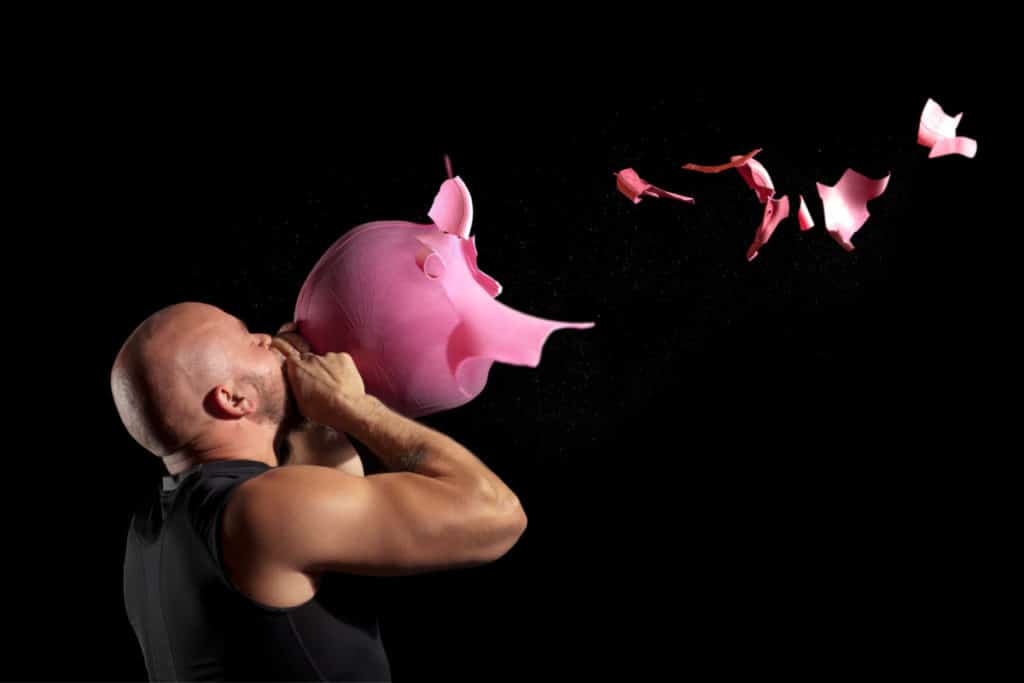This post contains affiliate links.


Very few things can elicit feelings of joy quite like a bunch of balloons. Balloons are often used for decoration, entertainment, and celebration at events such as birthday parties, weddings, and anniversaries. Growing up I remember constantly blowing up balloons with my mouth but now I know you should NEVER inflate balloons with your mouth.
While it may seem like a harmless activity, there are numerous reasons why you should never inflate a balloon with your mouth. I was also shocked to hear that many people still inflate balloons with their mouths. Working in the balloon industry I feel compelled to inform people every chance I get not only why you should never inflate a balloon with your mouth but how it is actually dangerous.
The act of blowing air into a balloon requires extreme pressure, which can cause strain on your mouth and lungs. This pressure can be potentially dangerous for individuals with certain health conditions such as asthma, emphysema, or COPD.
If that wasn’t enough, here are some of the reasons why you should never inflate a balloon with your mouth:

Harmful To Health

Inflating balloons with your mouth can be harmful to your health. When you blow a balloon, you are not only exhaling air but also saliva and bacteria from your mouth. These microorganisms can easily enter the balloon and cause it to become contaminated. Inhaling bacteria from a contaminated balloon can lead to severe health problems such as pneumonia and meningitis.
Some balloons contain harmful chemicals and some balloons are made from latex, both of which can cause allergic reactions in some people (more on that later). The chemicals and contaminants that are present in the air can also enter your mouth and lungs, causing respiratory problems, nausea, and headaches.

Balloons Are A Choking Hazard
Inhaling a balloon accidentally while inflating it can cause serious choking hazards, which can be life-threatening. Balloons are not designed to be ingested, and they can obstruct your airway, leading to suffocation.

Warning: CHOCKING HAZARD!!!
Children under 8 years old can choke or suffocate on uninflated or broken balloons. Adult supervision is required. Keep uninflated balloons from children. Discard broken balloons at once.
Of all children’s products, balloons are the leading cause of suffication death, according to CPSC injury data.
CPSP Safety Alert
Balloons that burst and small uninflated balloons can choke a child or infant. They’re a nightmare for an emergency physician and his team because, if they’ve been inhaled deeply enough that the child is still breathing but having difficulty, we cannot find the rubber with an X Ray. Of course, they can mold around the soft tissues in the throat and cause immediate death as well.
Dr. Joseph Yates – Retired Emergency Physician

Balloons Can Burst During Inflation

Balloons can burst unexpectedly during inflation, especially if they are overinflated or not made from high-quality materials. This can cause severe injuries to your eyes, face, and hands, resulting in cuts, bruises, and sometimes loss of vision. The sudden burst of a balloon can also startle and cause anxiety or panic in some individuals, particularly those with a phobia of balloons.
If the balloon bursts while you are inflating it, there is a risk that small pieces of the latex or plastic casing can become lodged in your throat, also causing you to choke. This risk is particularly significant for young children who may be more likely to accidentally inhale or swallow parts of a burst balloon.

Children Repeat What They See

Children repeat what they see. If they see an adult (or even worse a parent) inflating a balloon with their mouth, they may think that is the proper way to inflate a balloon and decide to try it themselves.

Latex Allergies

Many people are born with allergies and some allergies develop over time. Latex allergies are one of those that can develop over time with repeated exposure. Inflating balloons with your mouth can be dangerous for people with a latex allergy. Latex balloons are made of natural rubber latex, which contains proteins that can cause an allergic reaction in people with latex sensitivity.
A latex reaction can cause a range of symptoms, from mild rhinitis or conjunctivitis to severe respiratory distress. Some people may even experience anaphylaxis, a severe and potentially life-threatening allergic reaction.
“Up to 17% of health care workers have a latex allergy. In the general population, only 1% of people have a latex allergy.”
HealthResearchFunding.org

So How Should You Inflate A Balloon
Ok so now that we know some of the reasons why we should never inflate a balloon using our mouth, you may be asking yourself what is the proper way to inflate a balloon. The proper way to inflate a balloon is by using a balloon hand pump or balloon inflator. Make sure if you are going to use balloons that you use them responsibly. Always use a balloon pump or balloon inflator when inflating balloons.

For more information about balloon pumps and balloon inflators, check out my post Balloon Inflator Pump The Ultimate Guide How To Choose, Use, And Different Types here.
I hope this post brought value to your day. If it did, please consider sharing it with a friend or on your favorite social media. Thanks For Reading Fun With Balloons!

